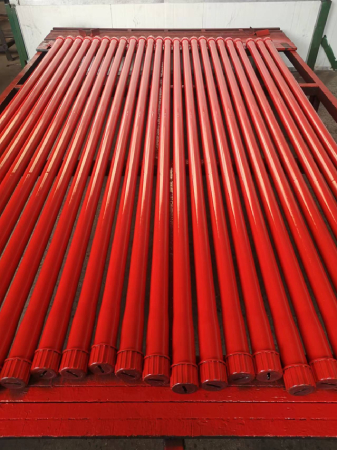- Afrikaans
- Albanian
- Amharic
- Arabic
- Armenian
- Azerbaijani
- Basque
- Belarusian
- Bengali
- Bosnian
- Bulgarian
- Catalan
- Cebuano
- Corsican
- Croatian
- Czech
- Danish
- Dutch
- English
- Esperanto
- Estonian
- Finnish
- French
- Frisian
- Galician
- Georgian
- German
- Greek
- Gujarati
- Haitian Creole
- hausa
- hawaiian
- Hebrew
- Hindi
- Miao
- Hungarian
- Icelandic
- igbo
- Indonesian
- irish
- Italian
- Japanese
- Javanese
- Kannada
- kazakh
- Khmer
- Rwandese
- Korean
- Kurdish
- Kyrgyz
- Lao
- Latin
- Latvian
- Lithuanian
- Luxembourgish
- Macedonian
- Malgashi
- Malay
- Malayalam
- Maltese
- Maori
- Marathi
- Mongolian
- Myanmar
- Nepali
- Norwegian
- Norwegian
- Occitan
- Pashto
- Persian
- Polish
- Portuguese
- Punjabi
- Romanian
- Russian
- Samoan
- Scottish Gaelic
- Serbian
- Sesotho
- Shona
- Sindhi
- Sinhala
- Slovak
- Slovenian
- Somali
- Spanish
- Sundanese
- Swahili
- Swedish
- Tagalog
- Tajik
- Tamil
- Tatar
- Telugu
- Thai
- Turkish
- Turkmen
- Ukrainian
- Urdu
- Uighur
- Uzbek
- Vietnamese
- Welsh
- Bantu
- Yiddish
- Yoruba
- Zulu
Understanding the Purpose and Function of a Bull Plug in Various Applications
What Is a Bull Plug Used For?
A bull plug, also known as a bullhead plug, is an essential component primarily used in hydraulic systems, but its applications extend to various industries and equipment. Understanding what a bull plug is and its uses can offer insights into its importance in maintaining efficiency and safety in complex systems.
Definition and Structure
At its core, a bull plug is a type of fitting that is designed to close off the end of a pipe, hose, or other fluid-carrying components. It is usually constructed from durable materials like steel, brass, or plastic, ensuring it can withstand high pressure and diverse environmental conditions. The design features a threaded end, allowing it to be screwed into the corresponding fitting securely. This reliable closure prevents fluid leakage and provides a secure seal, which is crucial for the safe operation of hydraulic systems.
Applications
The most notable application of a bull plug is in hydraulic systems, which are prevalent in various machines and equipment, such as construction vehicles, industrial machinery, and agricultural equipment. In these systems, fluid under pressure is used to transmit force and perform work. Any leaks in these systems can lead to inefficiencies, reduced performance, or even dangerous equipment failures. By using a bull plug to close off unused ports or hoses, operators can maintain the integrity of the hydraulic circuit and ensure that the machinery operates smoothly.
Bull plugs are also widely used in the oil and gas industry. Here, they serve a vital role in shutting off lines that are not in use, thus preventing the escape of valuable resources and avoiding environmental contamination. The robust sealing properties of a bull plug make it a reliable choice for both onshore and offshore applications, where safety is paramount due to the hazardous nature of the materials being handled.
what is a bull plug used for

Moreover, bull plugs find their place in water treatment facilities and plumbing. They are employed to seal off pipes during maintenance or repair work, allowing technicians to isolate specific sections of a system without having to drain the entire system. This functionality saves time and resources, making repairs more efficient and minimizing the disruption to services.
Benefits
The use of bull plugs offers several advantages. Firstly, they ensure a secure closure which is crucial in maintaining system pressure and preventing leaks. This promotes operational efficiency and reduces maintenance costs associated with leaks and other failures. Secondly, their construction from durable materials enhances their lifespan, making them a cost-effective solution for businesses that rely on hydraulic and fluid systems.
In addition, bull plugs contribute to the safety of operations. By preventing leaks in high-pressure systems, they help to avoid potentially dangerous situations that can arise from fluid spills or system failures. For industries dealing with hazardous materials, this added safety measure is invaluable.
Conclusion
In summary, the bull plug is a vital component in various industrial applications, particularly in hydraulic systems, oil and gas, and plumbing. Its function as a secure closure helps maintain system integrity, operational efficiency, and safety. Understanding the importance and applications of a bull plug assists professionals in selecting the right components for their systems, ensuring that they operate effectively and safely. Whether in heavy machinery or water treatment facilities, the trusty bull plug plays an indispensable role in maintaining the flow of operations.
-
Well Casing Extension Couplings – Applications and InstallationNewsJun.06,2025
-
Types of Crossover Subs in Drilling & CompletionNewsJun.06,2025
-
Key Features of High-Quality Tubing Pup JointsNewsJun.06,2025
-
Installation and Maintenance Tips for Steel Couplings for PipeNewsJun.06,2025
-
How to Select the Right Pup Joint for Oil & Gas OperationsNewsJun.06,2025
-
Applications of Stainless Steel Pipe CouplingsNewsJun.06,2025







